Winter often gets a bad rap and I can see why: cold, wind chill, snow storms, extra challenges of getting outside that come with slippery roads or impassable snow banks, short days and all-consuming darkness. We often talk about winter as something to get through, huddled at home waiting for the arrival of better days. What we fail to see as we binge through yet another Netflix show is winter’s magic at work: crisp, sparkling air that fills our bodies with vigour and joy, softness of a snowfall that erases the edges and transforms familiar scenes, a promise of newness that comes with a fresh snow cover, mesmerizing creations chiselled out of ice. This past weekend we headed in search of this magic to Bruce Peninsula, a place where Niagara Escarpment’s rugged limestone cliffs and turquoise waters of Georgian Bay work together to create a masterpiece of a landscape. With an extra touch of winter’s artistic genius, the scenes were truly spellbinding.

Bruce Peninsula is part of the Territory of The People of the Three Fires known as Ojibway, Odawa, and Pottawatomie Nations. It is home to the Chippewas of Saugeen, and the Chippewas of Nawash, known collectively as the Saugeen Ojibway Nation, who continue to be the traditional keepers of this land. Known as the Saugeen Peninsula to the Ojibway people, this narrow strip of land separates Lake Huron (Odauwah Gummauh) and Georgian Bay (Wassau-Gummauh). The Niagara Escarpment, which starts in the state of New York, runs through southern Ontario on its way to Michigan and Wisconsin, forms the spine of the Bruce Peninsula and Manitoulin Island. Known as Gchi-Bimadinaa (The Great Cliff That Runs Along) in Anishnaabe or Kstenhraktátye (Along the Cliffs) in Kanyen’kehá:ka / Mohawk, this remnant shoreline of an ancient sea boasts some fascinating rock formations that attract visitors all year round.
We visited the national park that sits at the tip of Bruce Peninsula several times in the past but always in the summer. We talked about paying it a visit in the winter, even researched possible accommodations but hotels felt too fancy and staying in a tent too extreme. So when a post popped up in my Facebook feed about Bruce Peninsula National Park piloting yurt stays in the winter at its Cyprus Lake campground, I knew I had to act. With years of experience booking campsites in Ontario and across North America under my belt, it only took a few minutes to reserve one of the yurts for a weekend in January.
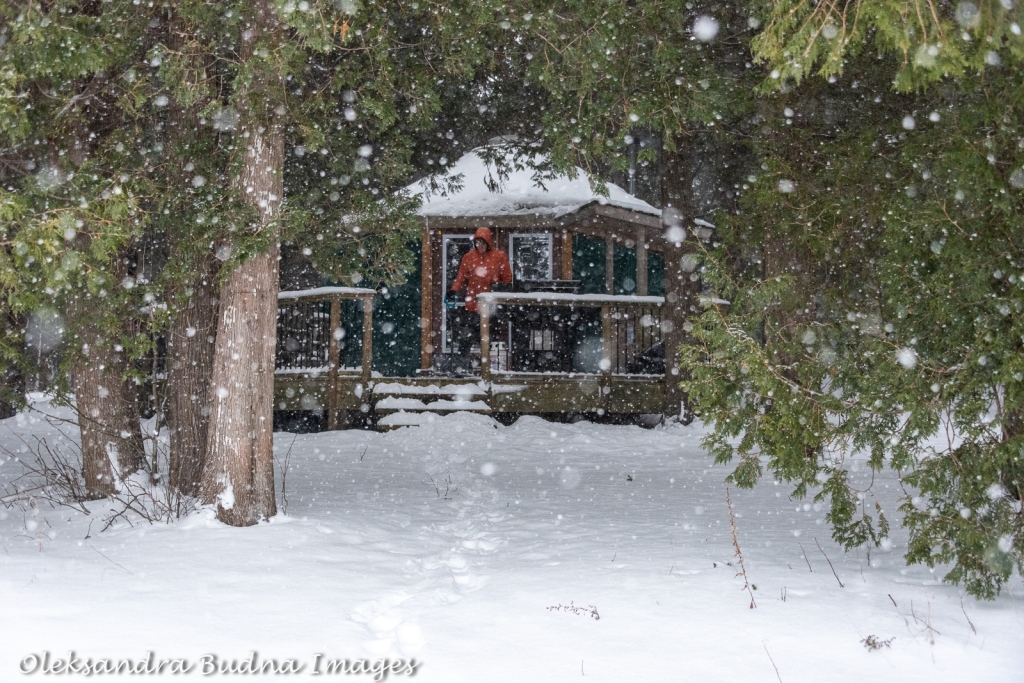
Fast forward a couple of months into the future and here we were, at the parking lot, trying to locate the best route to Yurt #4, a couple of packed sleds in tow. The walk to the yurt was less than five minutes. Still we were looking forward to getting out of the cold. All our hopes were dashed when we discovered that the temperature inside wasn’t much higher than outside. With flashlights on our heads (there’s no electricity inside the yurt), we got to turning this cold space into our cozy home for the next couple of days. The first task on the list was warming it up. Park staff left four bundles of wood, some newspapers and fire starters in the yurt. Unfortunately, the wood was covered in snow and frozen, which meant extra time to get a proper fire going. After about two hours of huddling around the wood stove, we felt the yurt warmed up enough for us to get into our sleeping bags.
When we woke up the next morning, it was nice and toasty. That didn’t just happen, of course, and required waking up several times a night to add more wood. The result was worth it: crackling fire, light pouring through the skylight up above, fluffy snow clumps waltzing outside – it was a perfect winter scene. Snowfall intensified through the morning, eventually erasing the line between the earth and the sky, as if someone had shaken a magic etch-a-sketch leaving nothing but an empty white screen behind. As we listened to the wind howling past our yurt and whipping up snow funnels across the lake, we knew our hike to Georgian Bay would require some serious layers.
Our walk that day started with the Cyprus Lake Trail that ran right past our yurt. As long as the trail hugged the long edge of the lake and we walked in the same direction as the wind, we were somewhat protected from the worst of its fury. Eventually, however, the trail rounded the lake and that’s when the wind hit us with its full force, showering us with snow, trying to penetrate our many layers. Luckily, that portion of the trail was short and once we turned away from Cyprus Lake toward Georgian Bay, the wind got lost among the trees.
After a one-kilometre walk through a magical winter forest, we emerged on the other side where we were greeted with a mesmerizing scene of snow covered cliffs carved into the endless expanse of Georgian Bay. Despite it being a cloudy day, the Bay resisted the steely greyness that usually comes with overcast skies. Its waters displayed an impressive palette ranging from bright turquoise and teal to cerulean and indigo. The sky eventually followed the lead, pushing the clouds away and offering occasional peeks of blue of its own.
We followed the shore looking for familiar sights but winter, an ever talented magician, reshaped the landscape making it almost unrecognizable. The Indian Head Cove, which in the summer bustles with activity, laughter and shrieks of joy as people plunge into deceptively inviting waters, was now cast in ice, the only sound coming from waves crashing against the shore. The natural arch sat camouflaged by mounds of snow, Georgian Bay barely visible through a much narrower opening. The famous Grotto that attracts crowds other times of year with its glowing blue waters was a dark gaping hole against the white of the cliffs and jagged icicle chandeliers hanging from its walls and ceiling.
By the time we headed home, the wind had settled and the contours of Cyprus Lake had been redrawn. The walk back felt faster, probably because we knew we had our warm yurt, veggie burgers, a round of 7 Wonders and books awaiting us at the end.
The next morning, it was time to leave, which means we had to be up early to pack and get out of the yurt by 11. I am not a fan of these early departure times. On the plus side, once we were done packing, we still had a lot of time to do more hiking before heading back to Toronto. The temperature had dropped overnight. The sky was a patchwork of vibrant blue and puffy white clouds suspended in the air like celestial snow mounds. The air had that dazzling, crisp quality that’s only possible on a sunny winter day.
We decided to take a different route to the Grotto: via the Horse Lake trail and then Bruce Trail along Georgian Bay. The snowfall the day before meant we had to redraw the trail with our footsteps. Once we got to the shore, we had to deal with knee-deep snow and frozen boulders underneath – a recipe for a twisted ankle. Luckily, we managed to navigate it without any casualties.

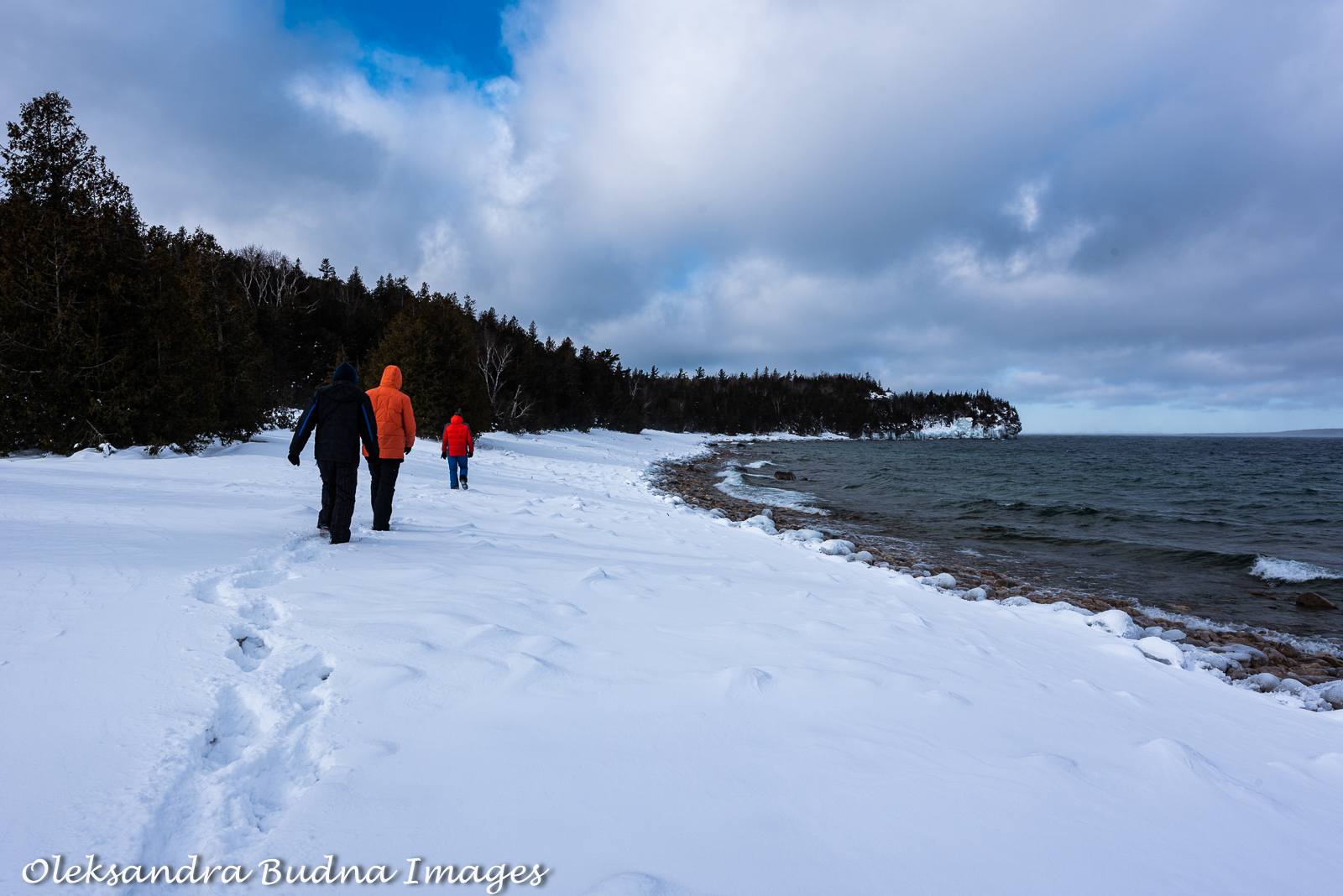

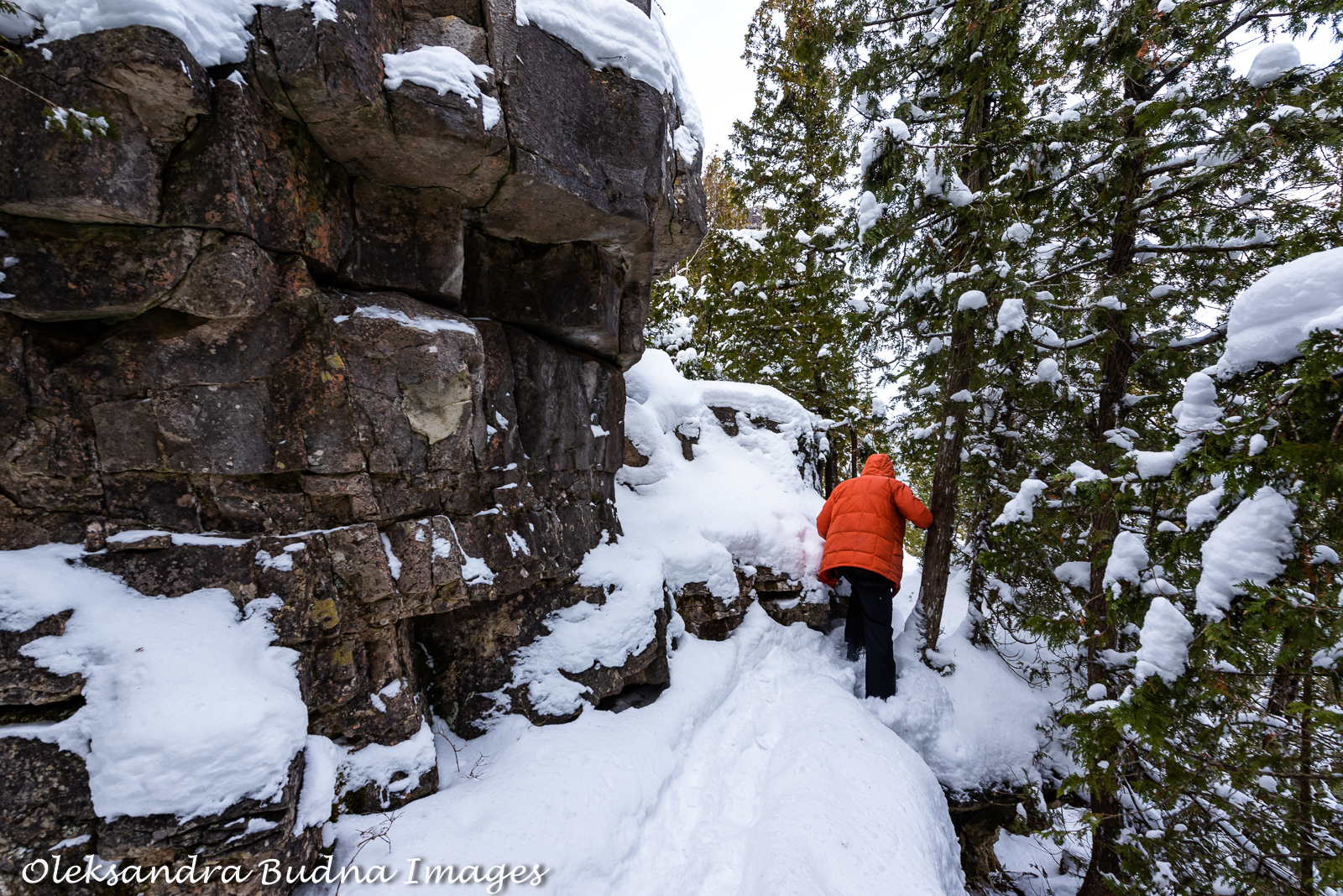
As a reward, we were allowed to cross a portal into a magical fairy-tale land and walked right into an ice-castle worthy of Snow Queen. Elaborate crystal sculptures clung to trees and rocks, icicles were splayed against rock walls like strips of cloth flapping in the wind, and chandeliers of ice sparkled in the sun.


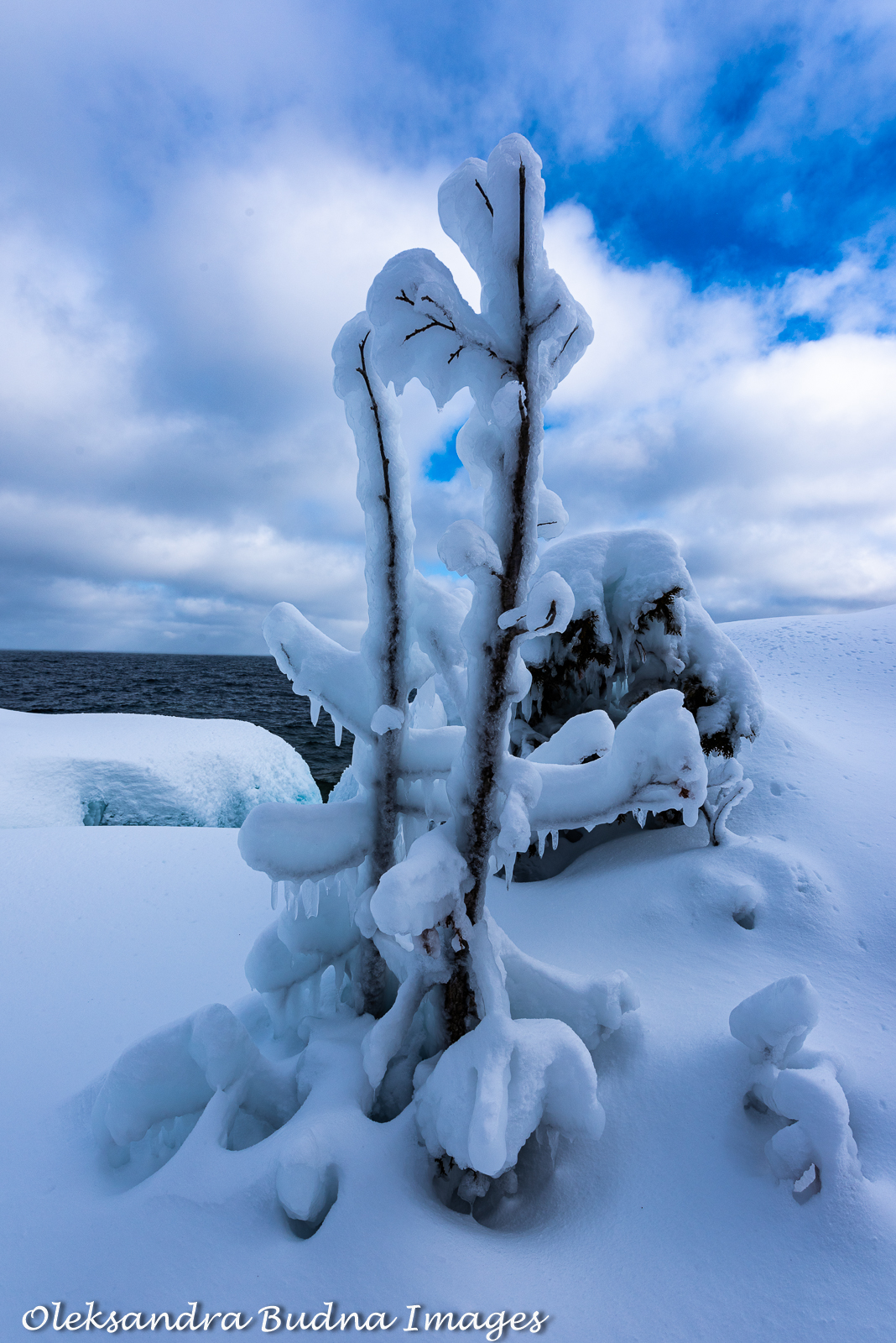

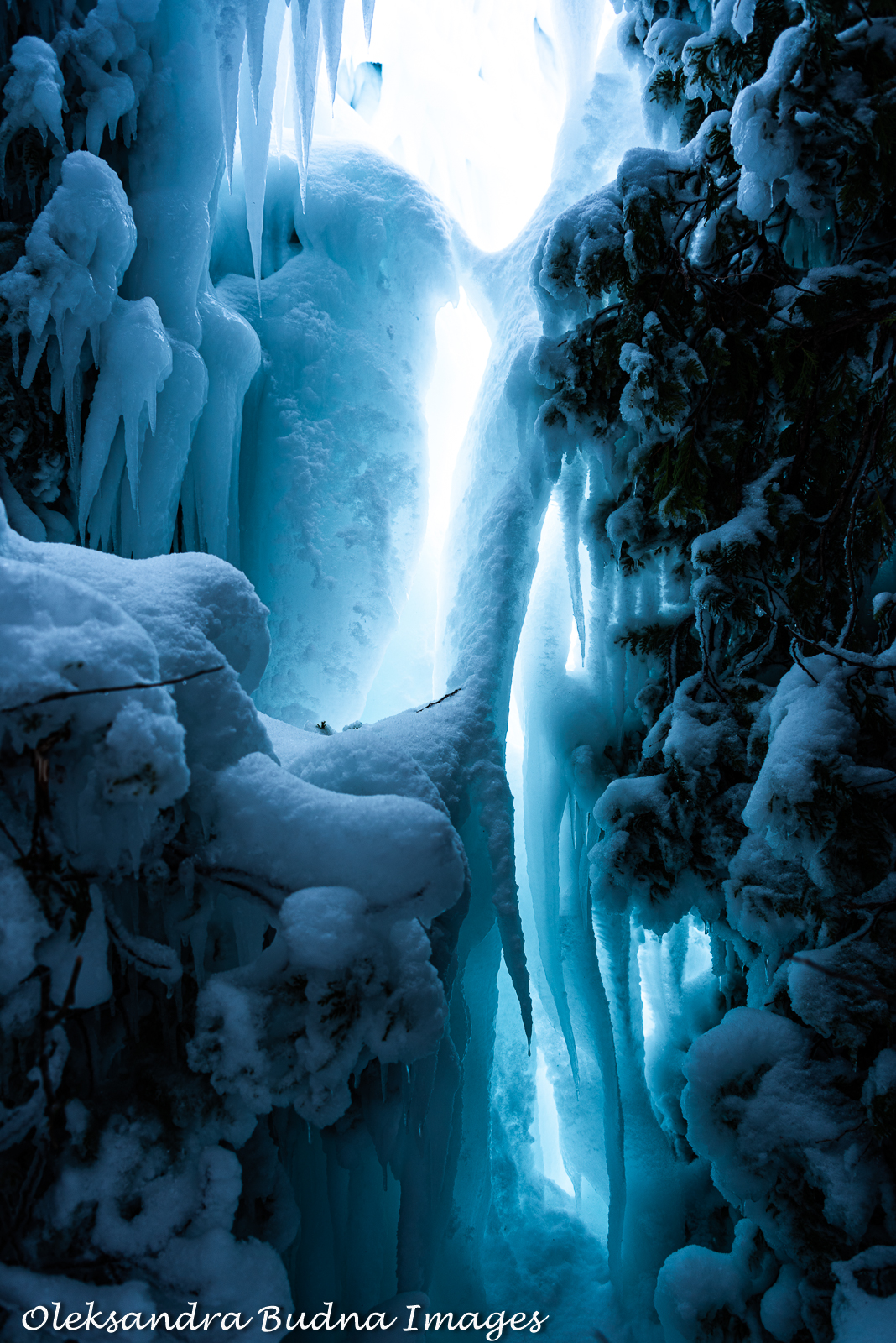


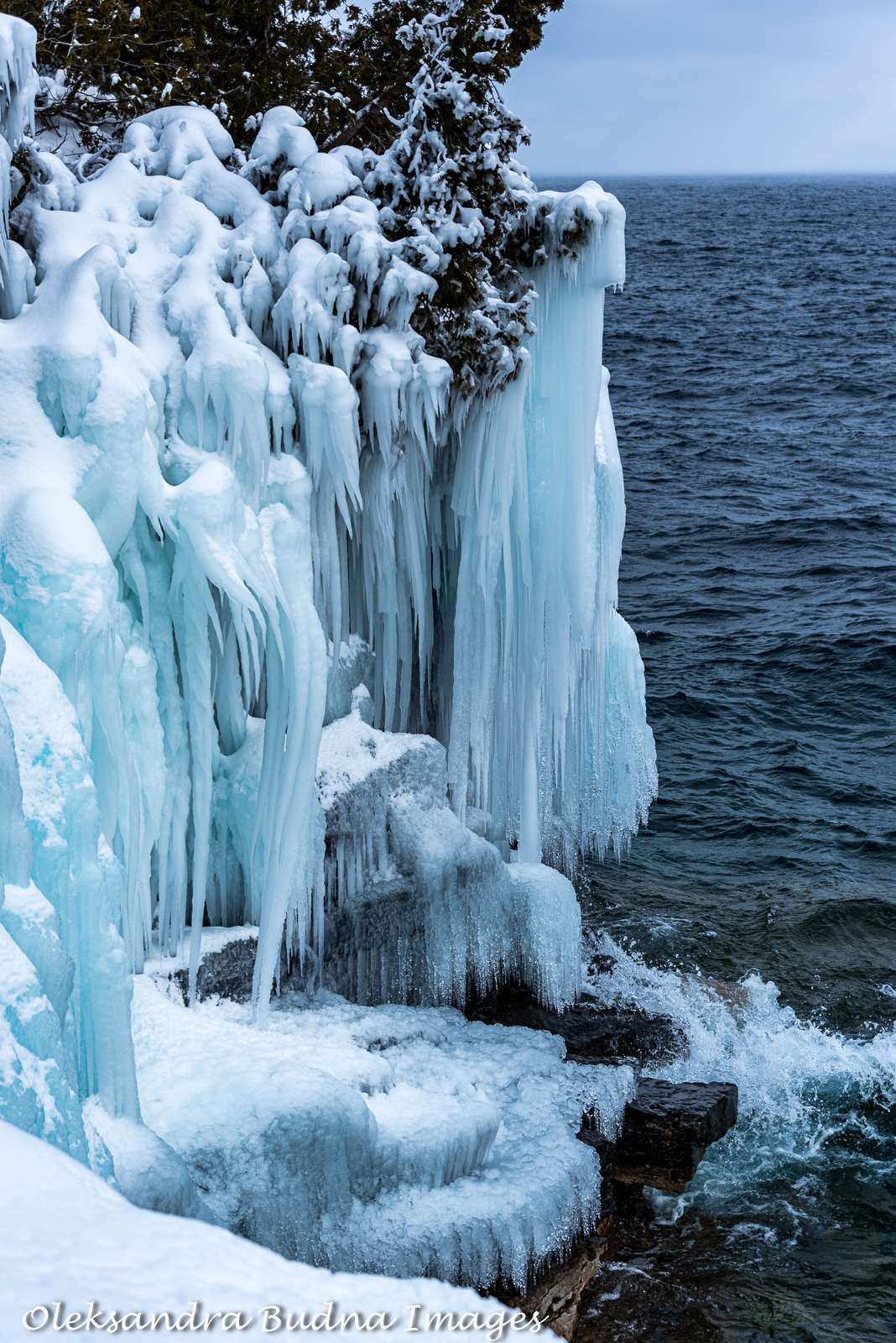

Encouraged by the sun, Georgian Bay reached even deeper into its box of colours and spilled the brightest turquoise into the water. And while we couldn’t go for a swim, our spirits dove right in to wash off anxieties and get imbued with the joy of this wondrous winter scene. Our beings overflowing with its beauty, our lungs filled with sparkling air and ears brimming with the crystalline music of the waves and crunching snow, we were finally ready to head back home.

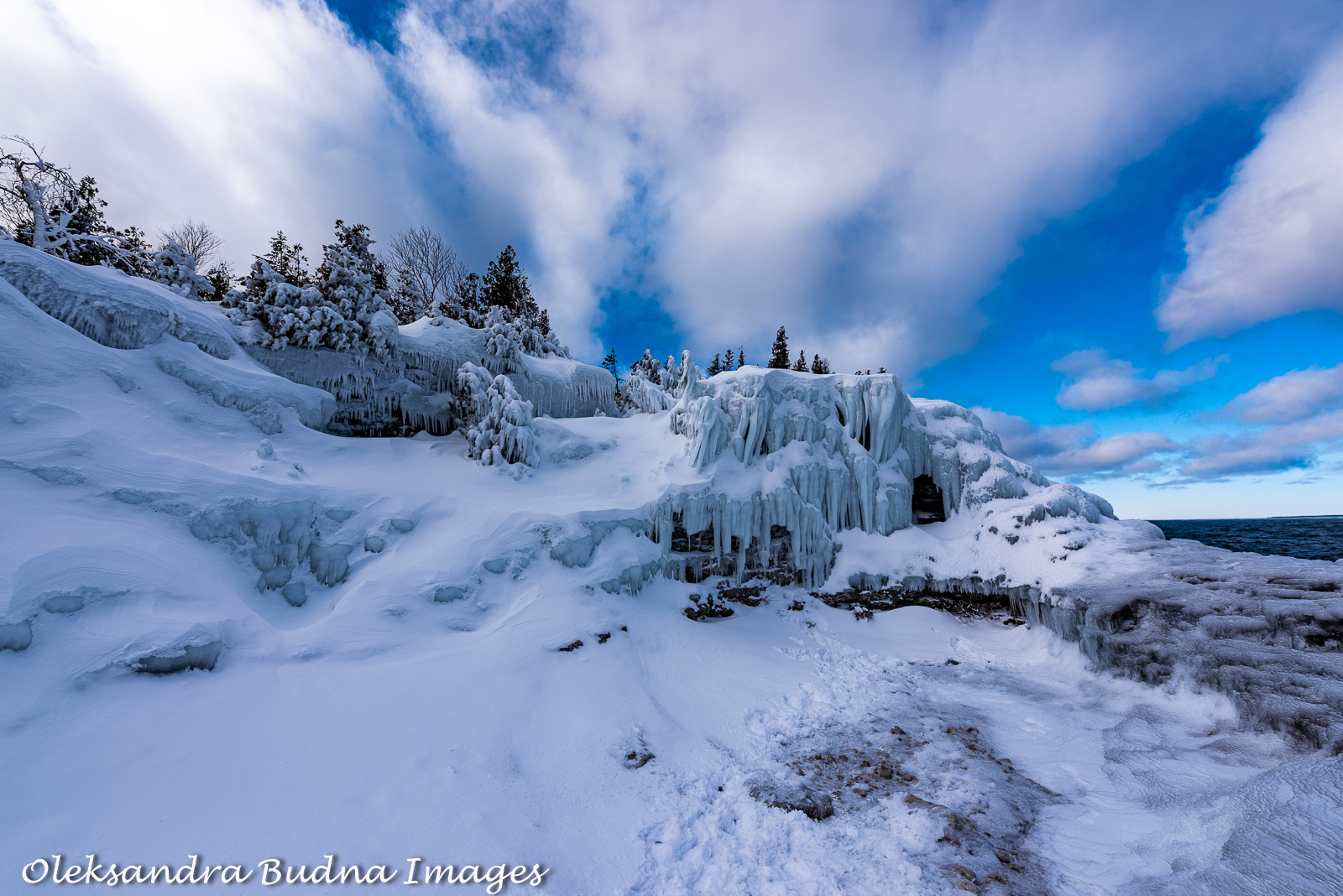

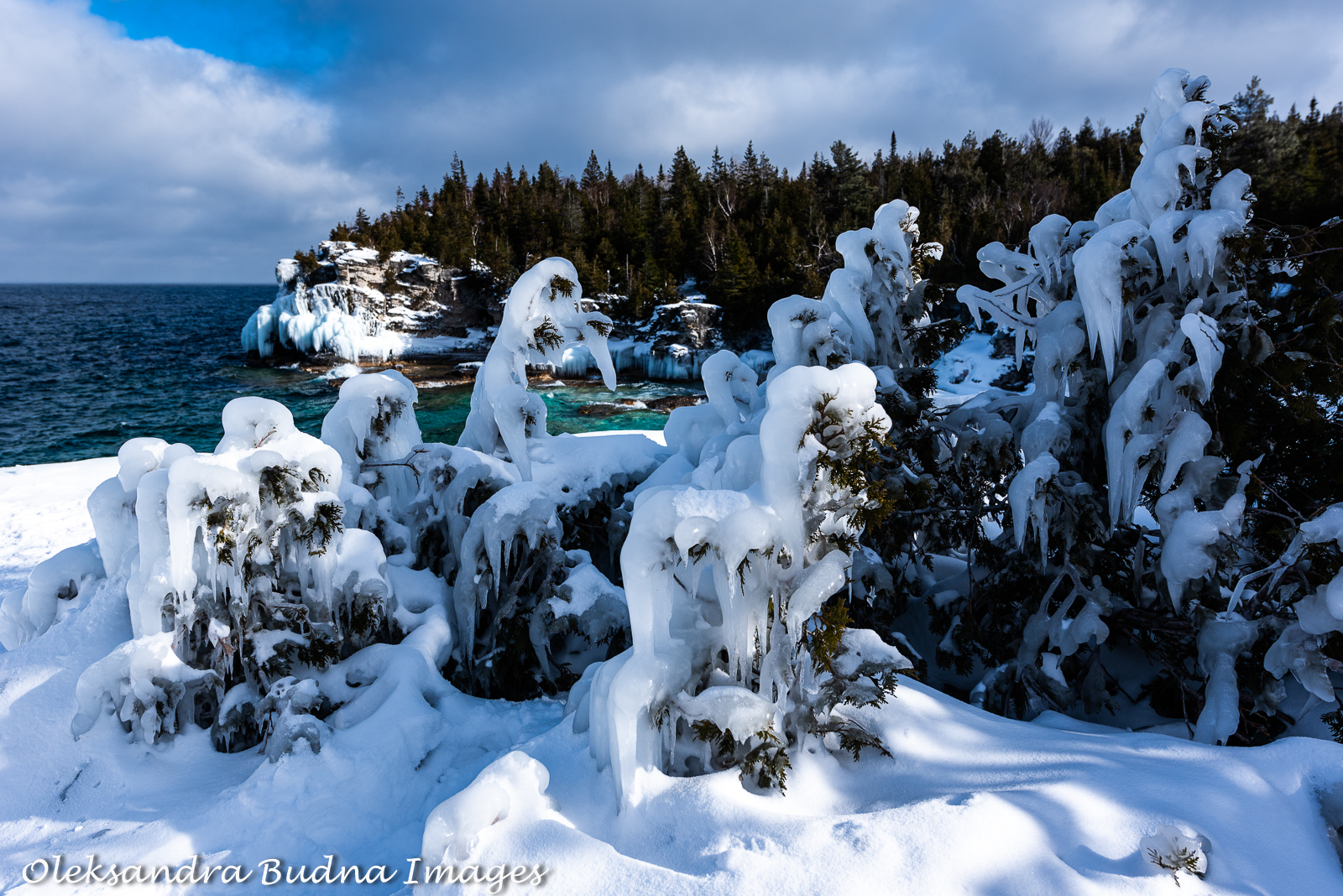

General information
Bruce Peninsula is a beauty of a place any time of the year. Winter offers an opportunity to experience a different side of the park – wrapped in the magic of snow and ice and bathed in serenity not possible during the months of summer crowds.
Several options are available if you decide to venture into the park between November and April: front country camping at Tamarack Campground, backcountry camping at Storm Haven and High Dump, and yurt camping at Cyprus Lake.
There are 10 yurts altogether. All yurts are walk-ins; sleds and carts are provided to transport gear. Each yurt offers sleeping arrangements for five people and has everything for a comfortable stay, even if the furnishings are a bit of a mishmash of styles: a rustic log bunk bed and a single stool combined with the modern-looking shelving unit, cupboard and pull-down bed and casual plastic table and chairs. There is a wood stove for heating (wood needs to be purchased at the registration office) but there’s no electricity so make sure to bring lamps and flashlights. Outside you’ll find a deck with a patio table, chairs and fireplace, as well as a BBQ with a side burner. A comfort station with flush toilets, showers and potable water is located near the parking lot.
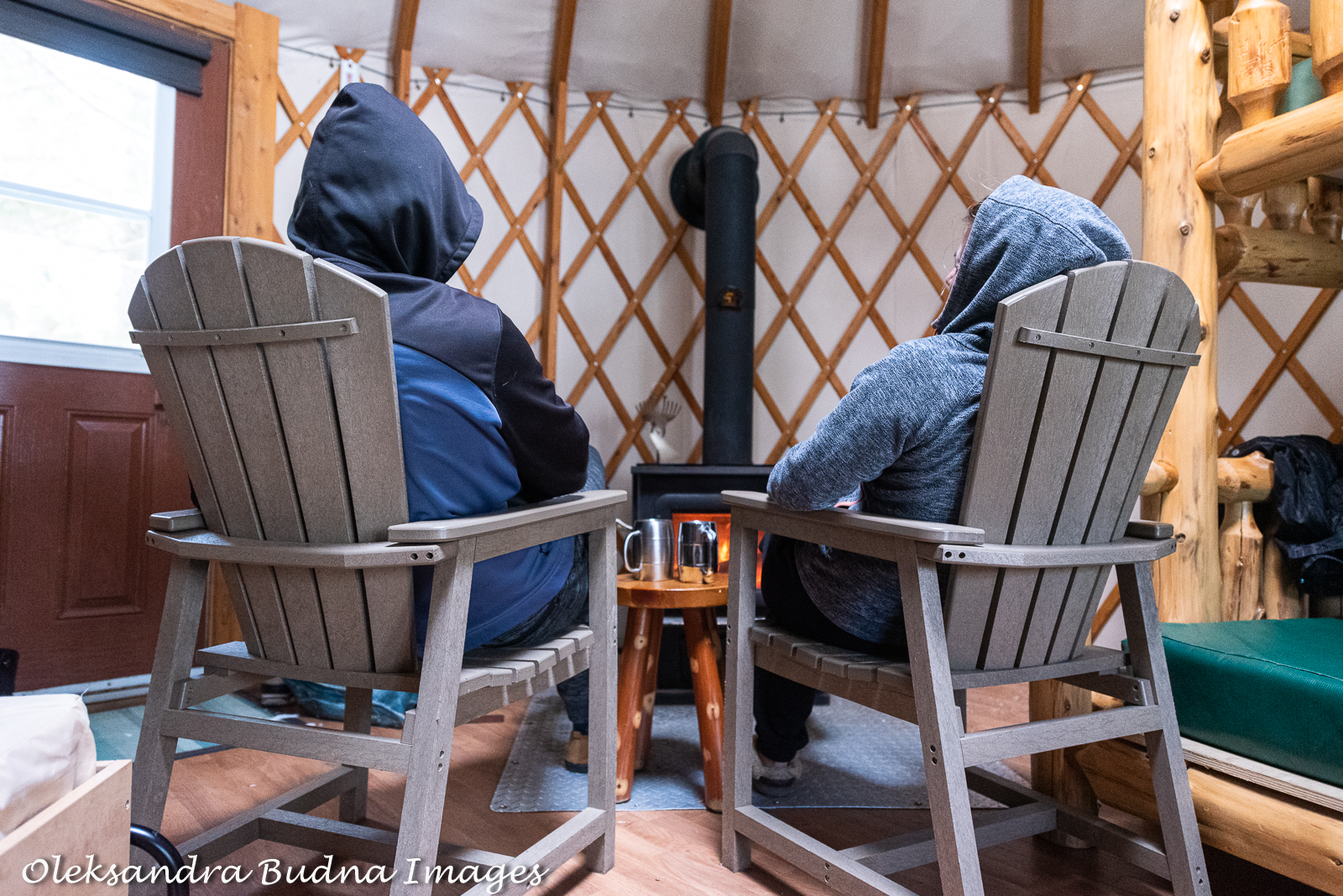
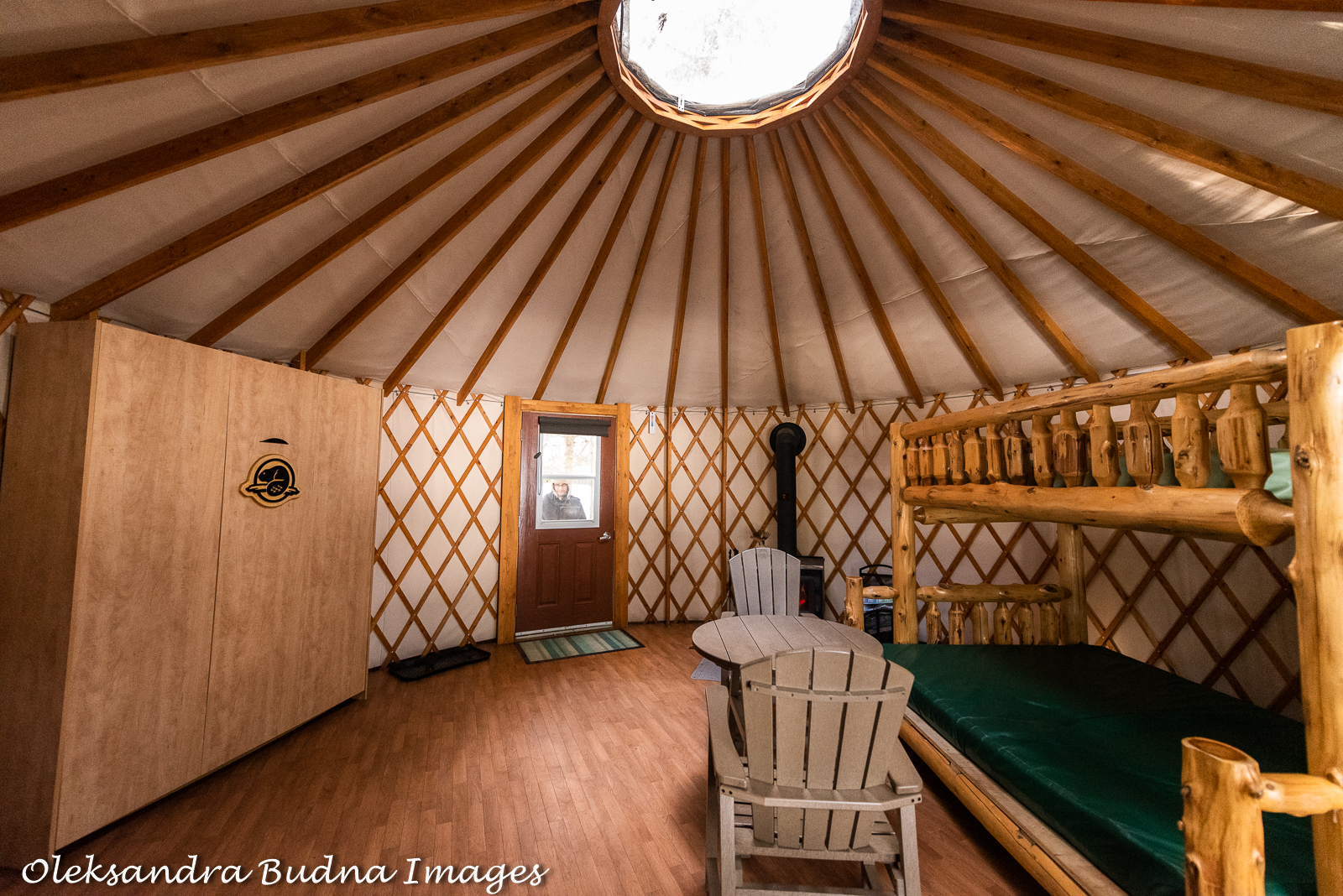

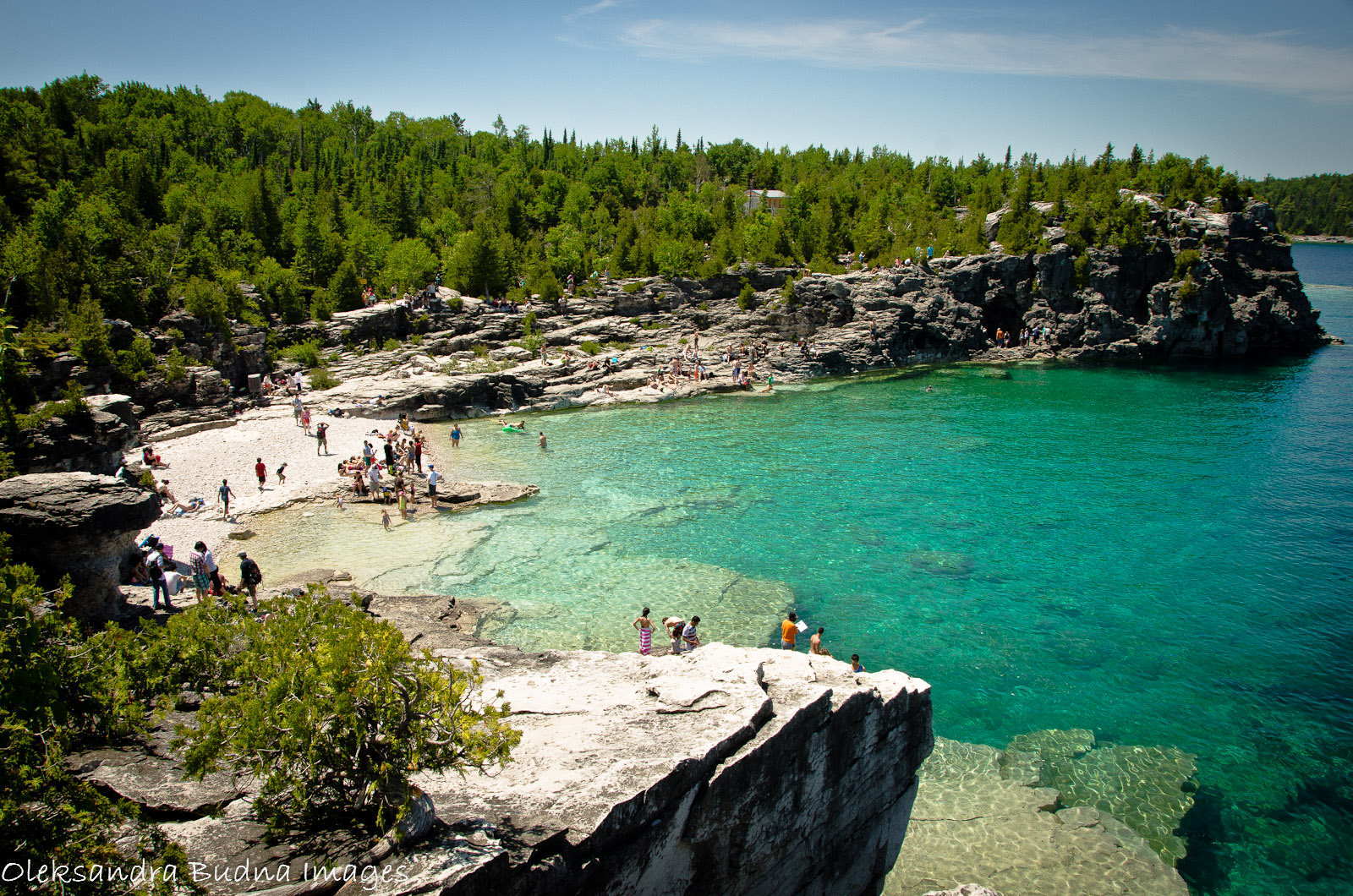
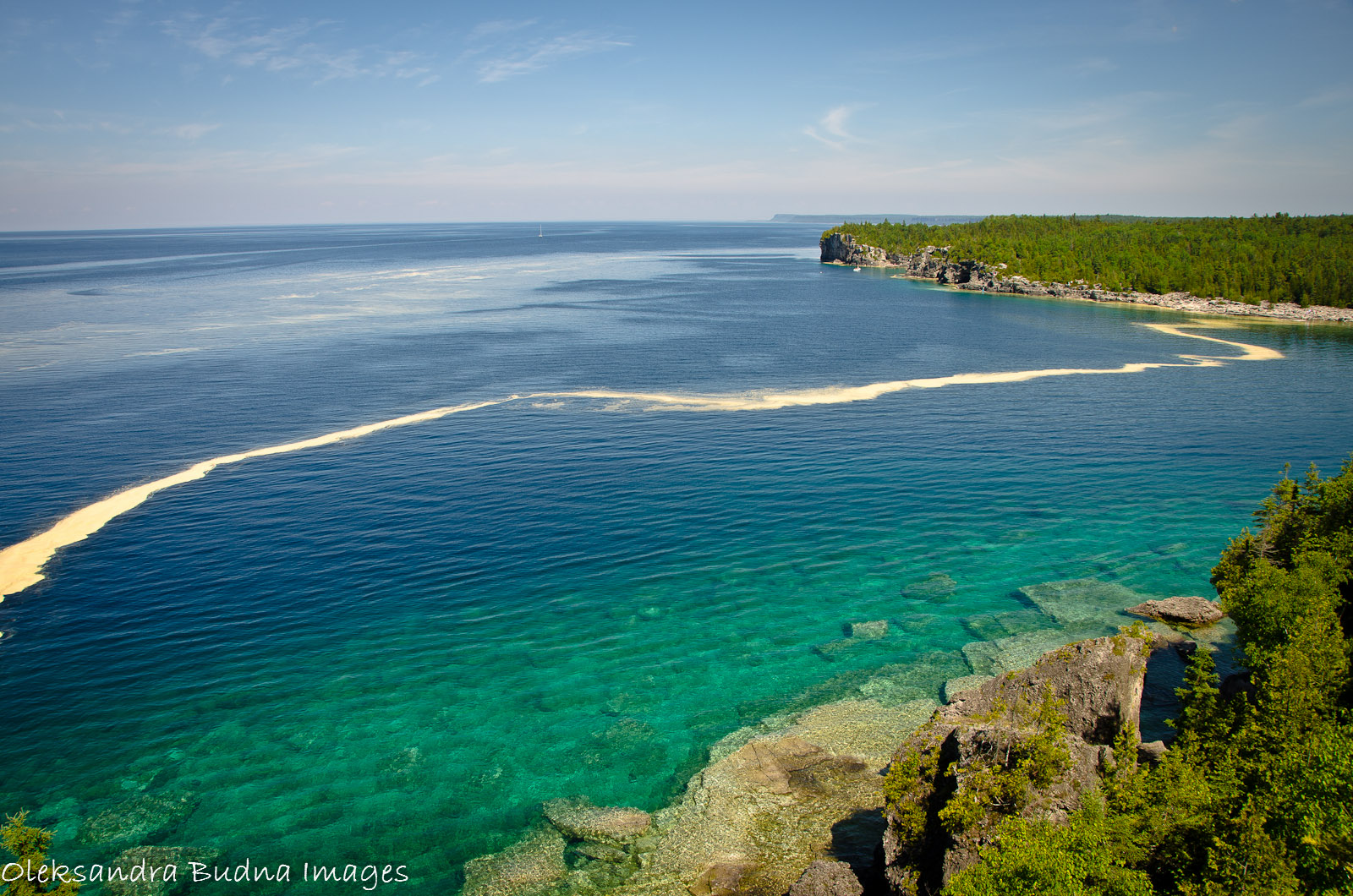
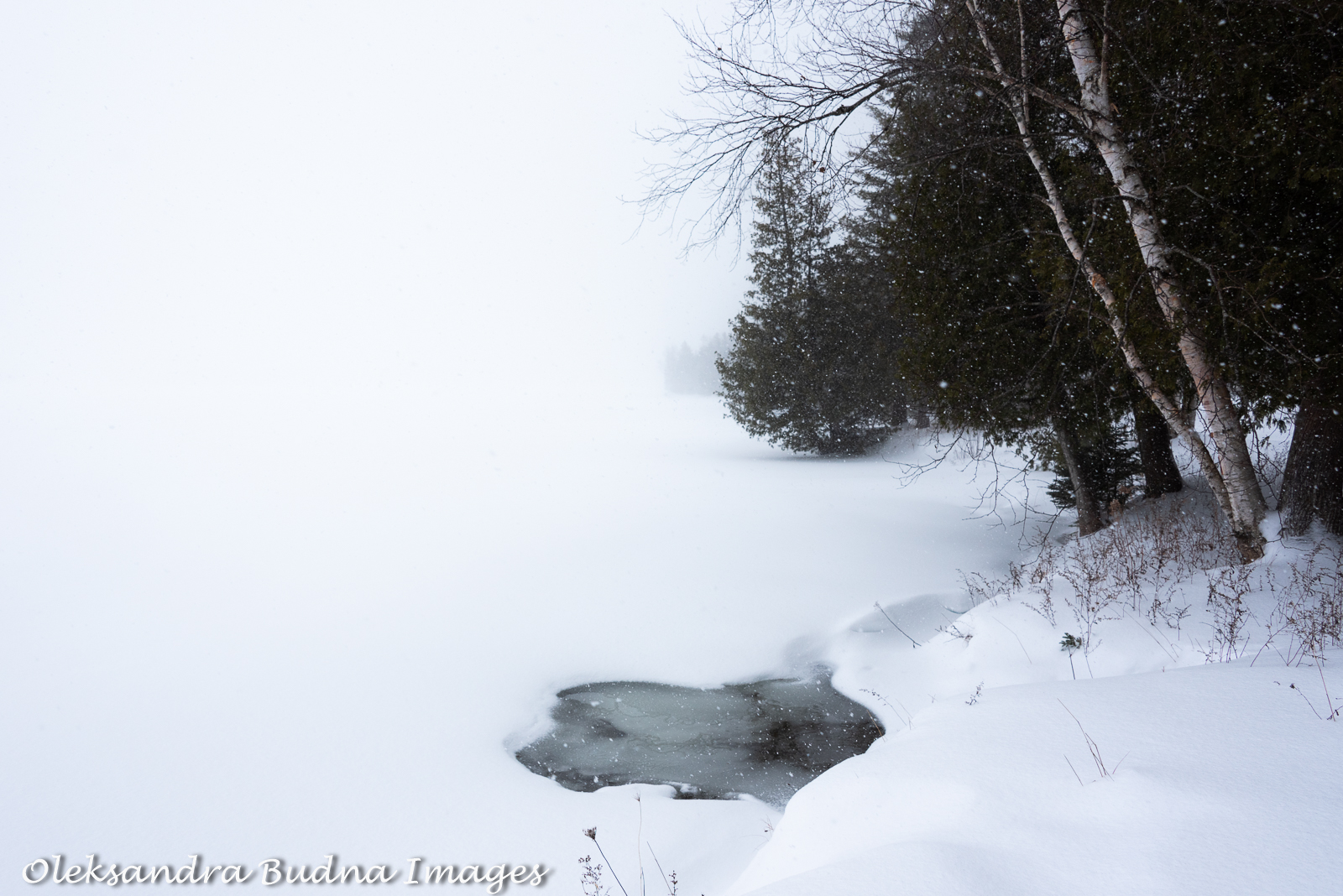
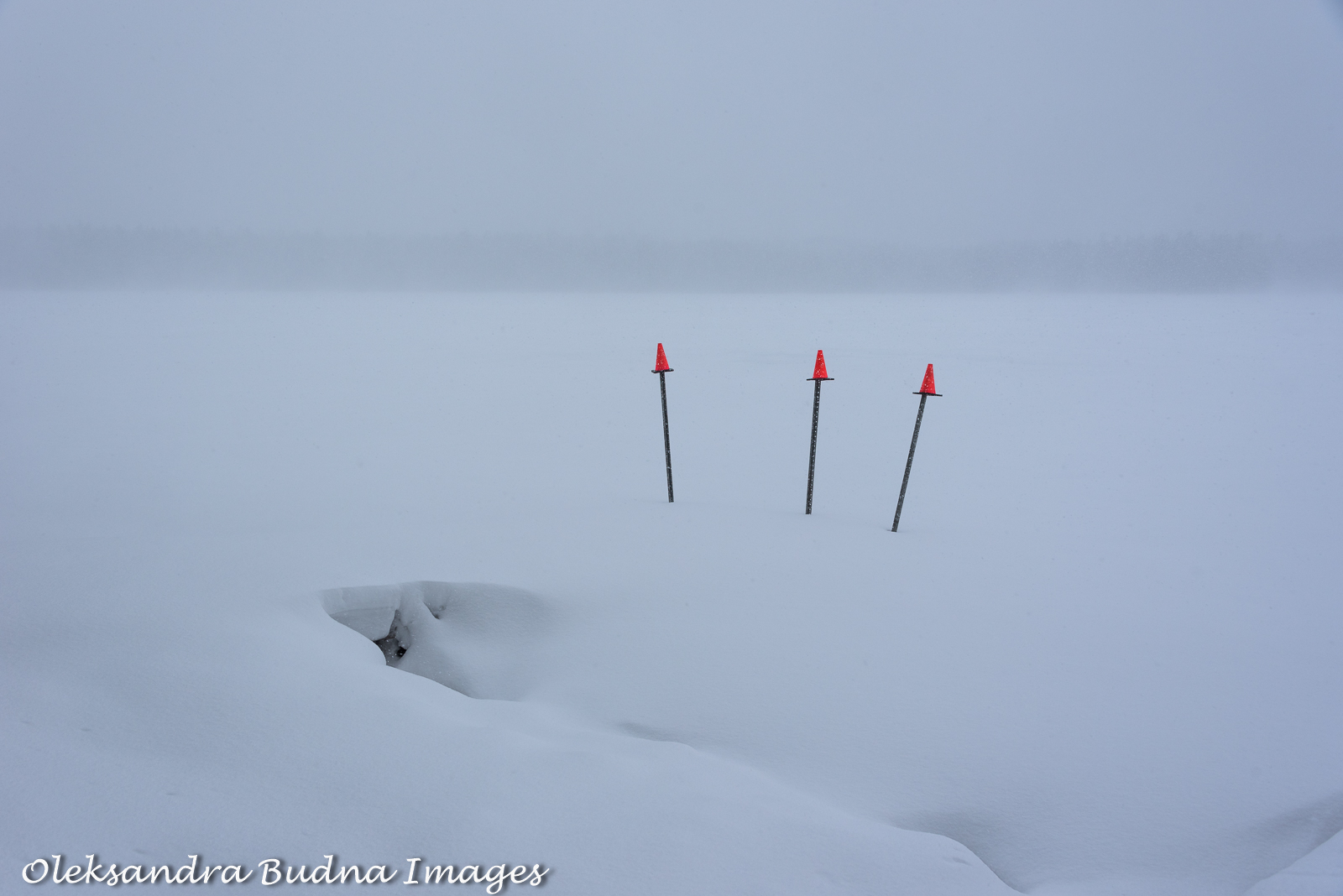



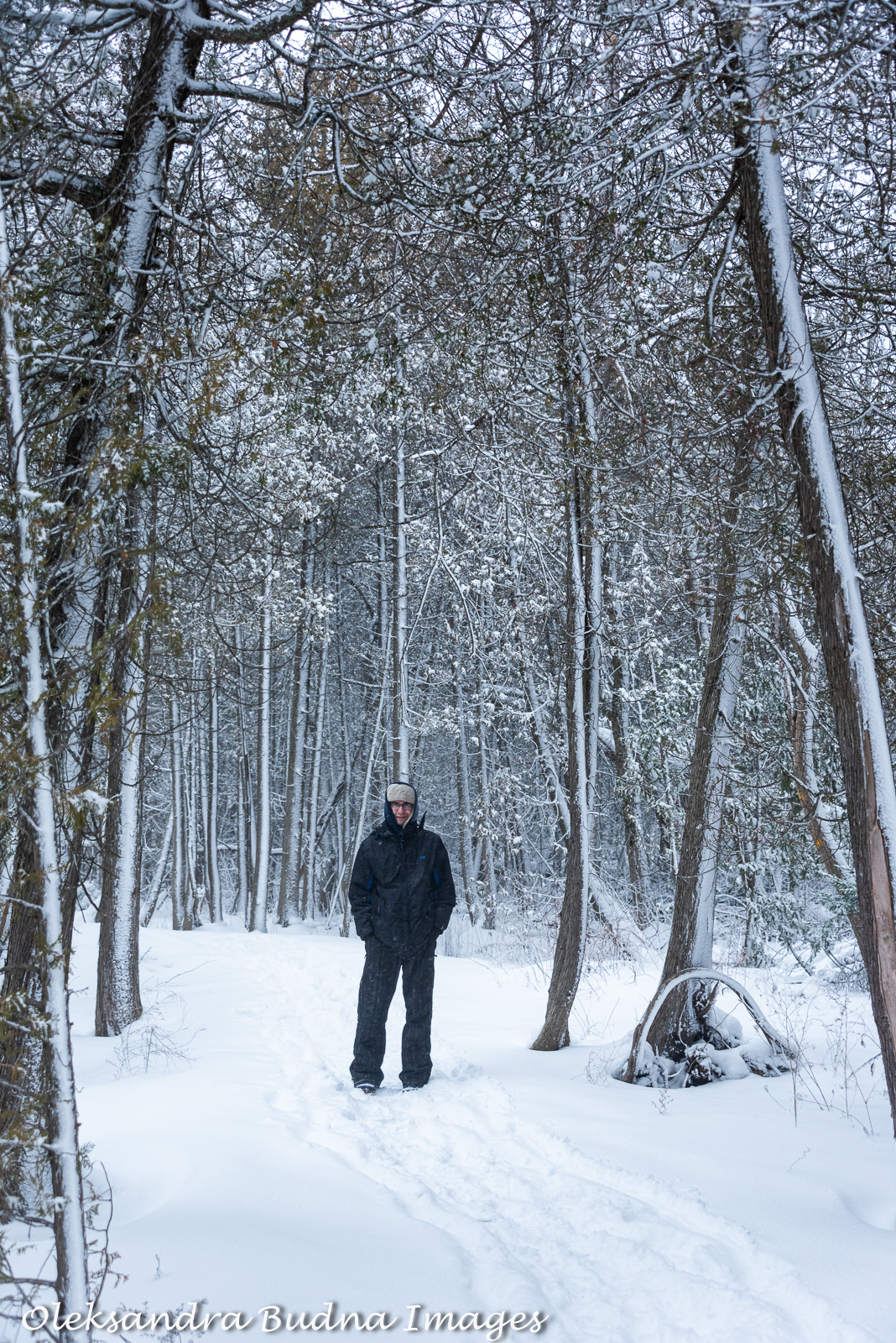

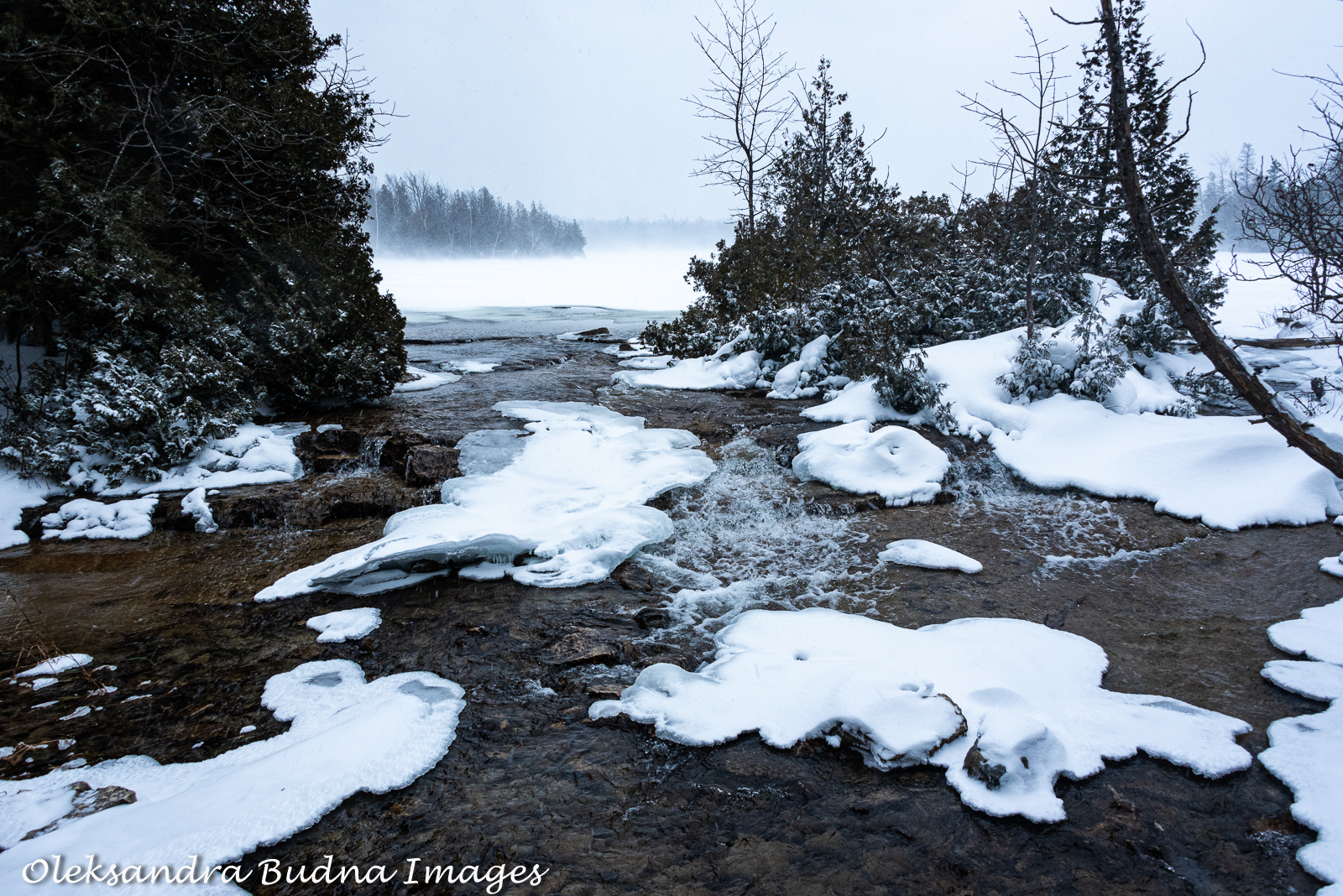

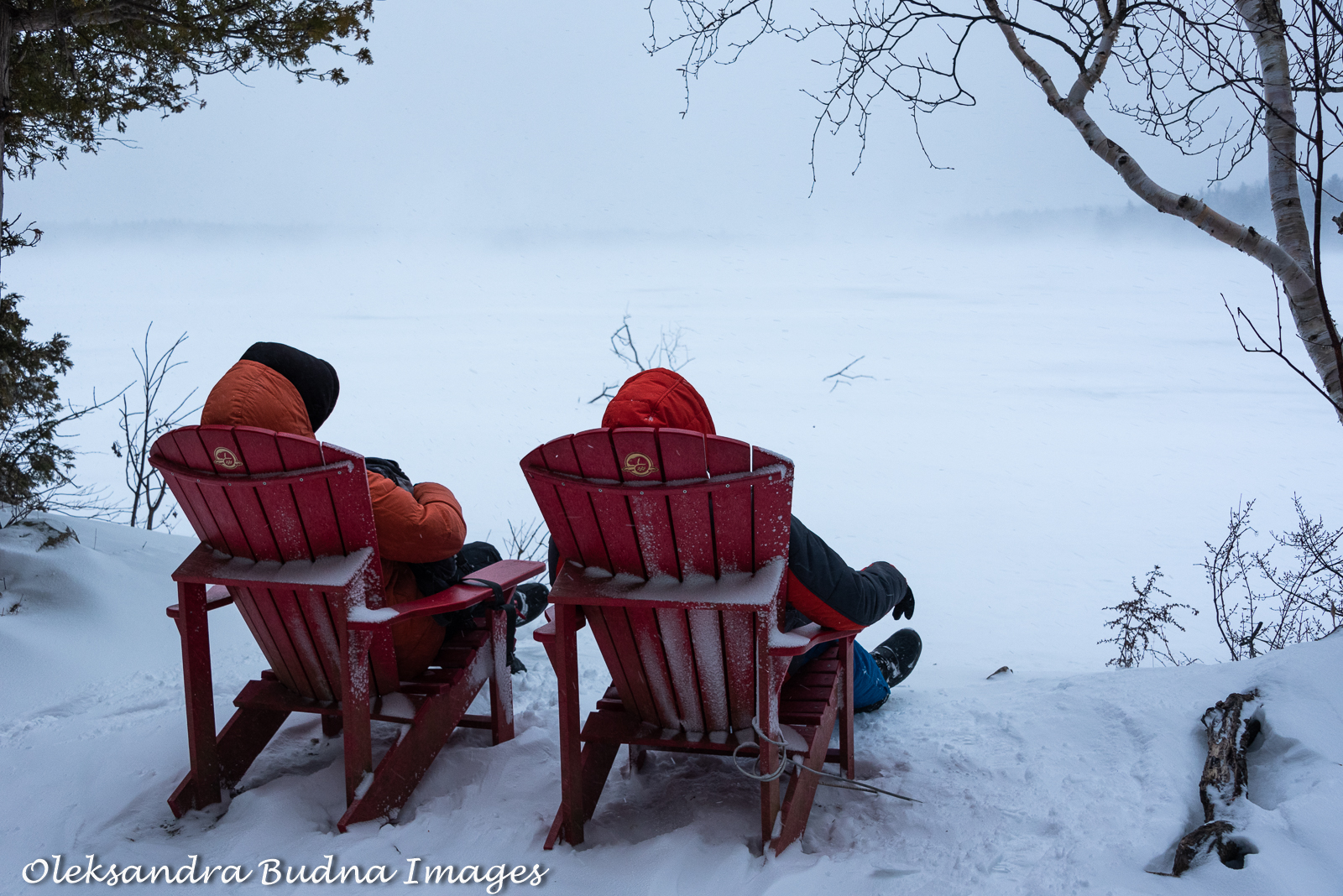

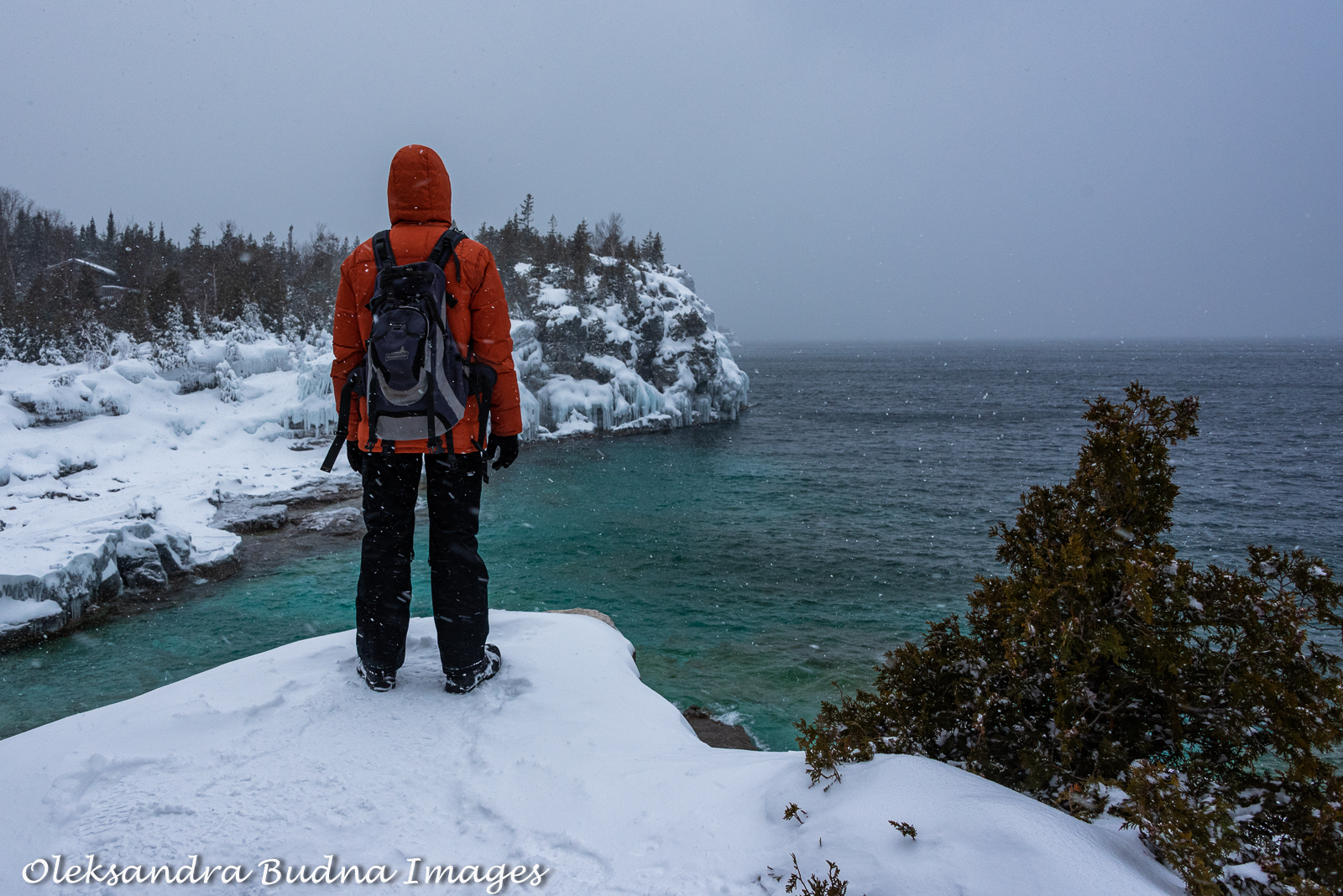


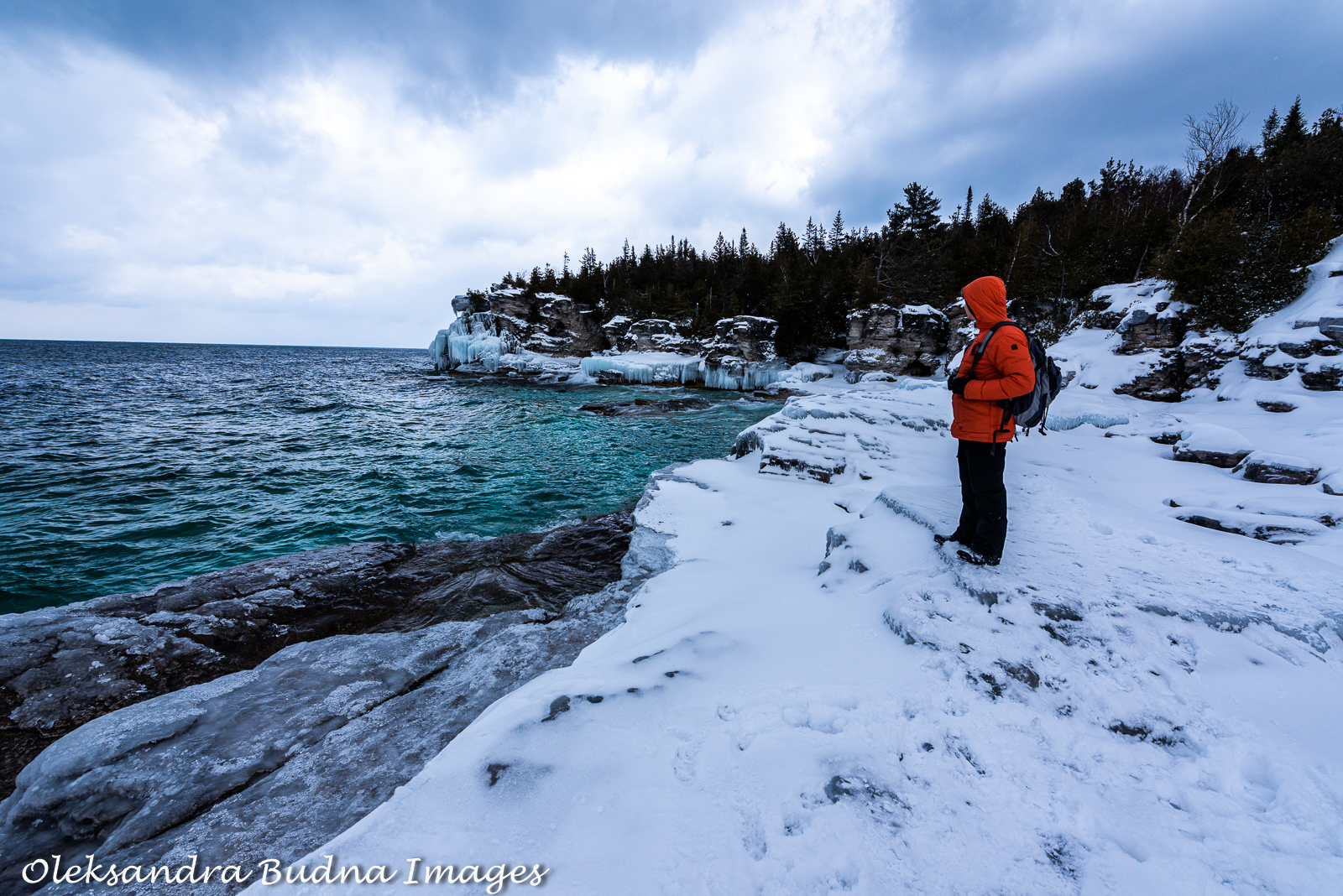
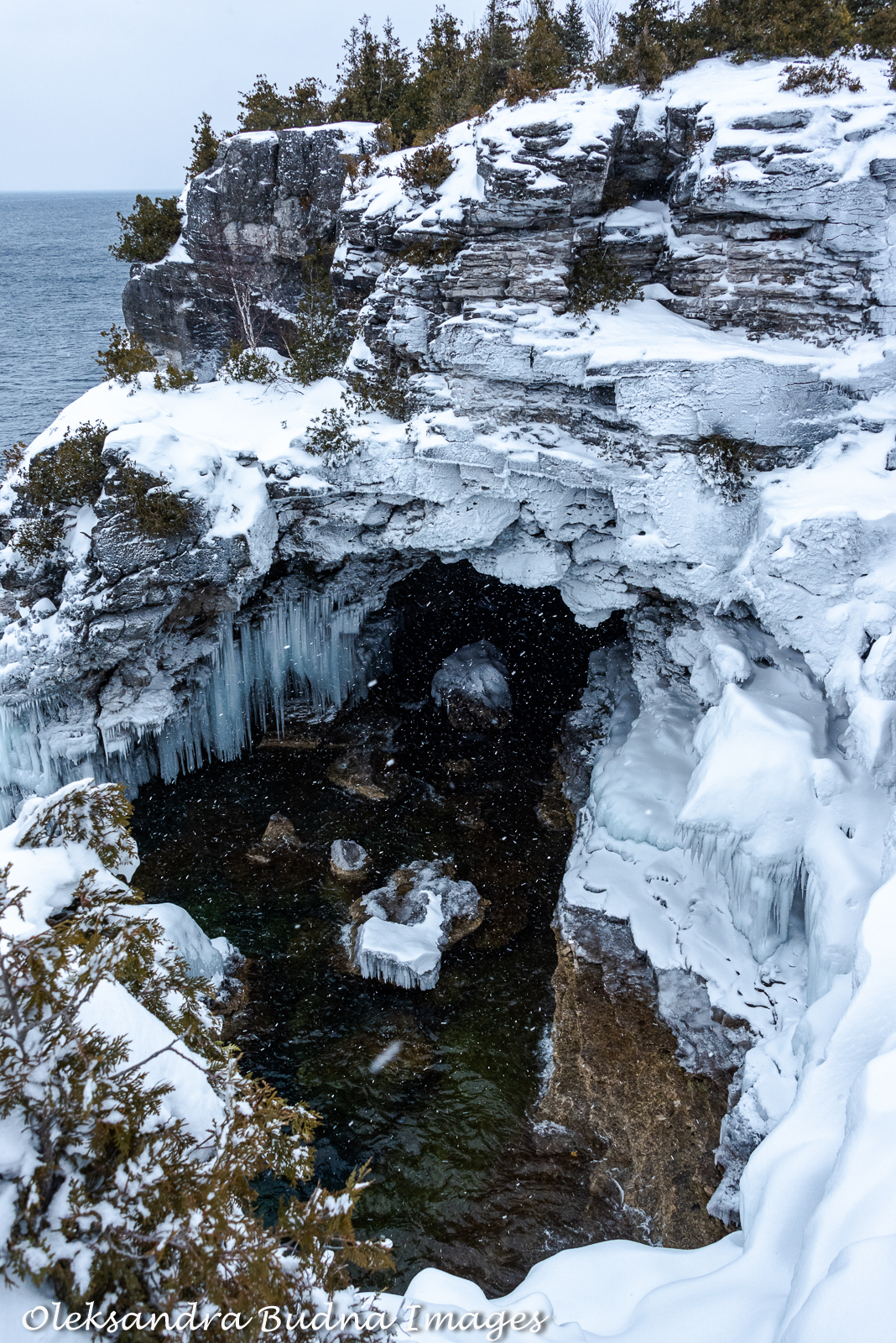
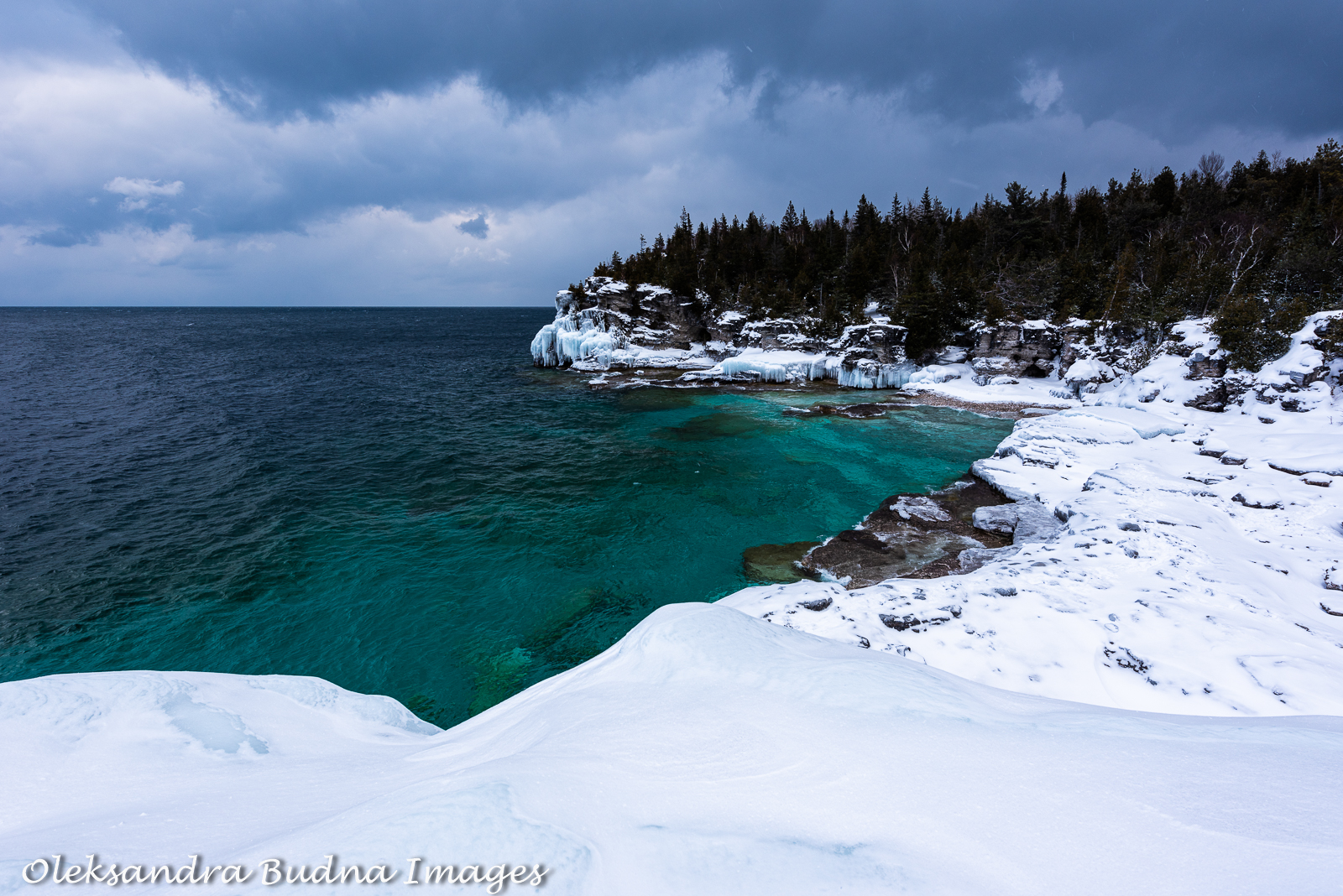

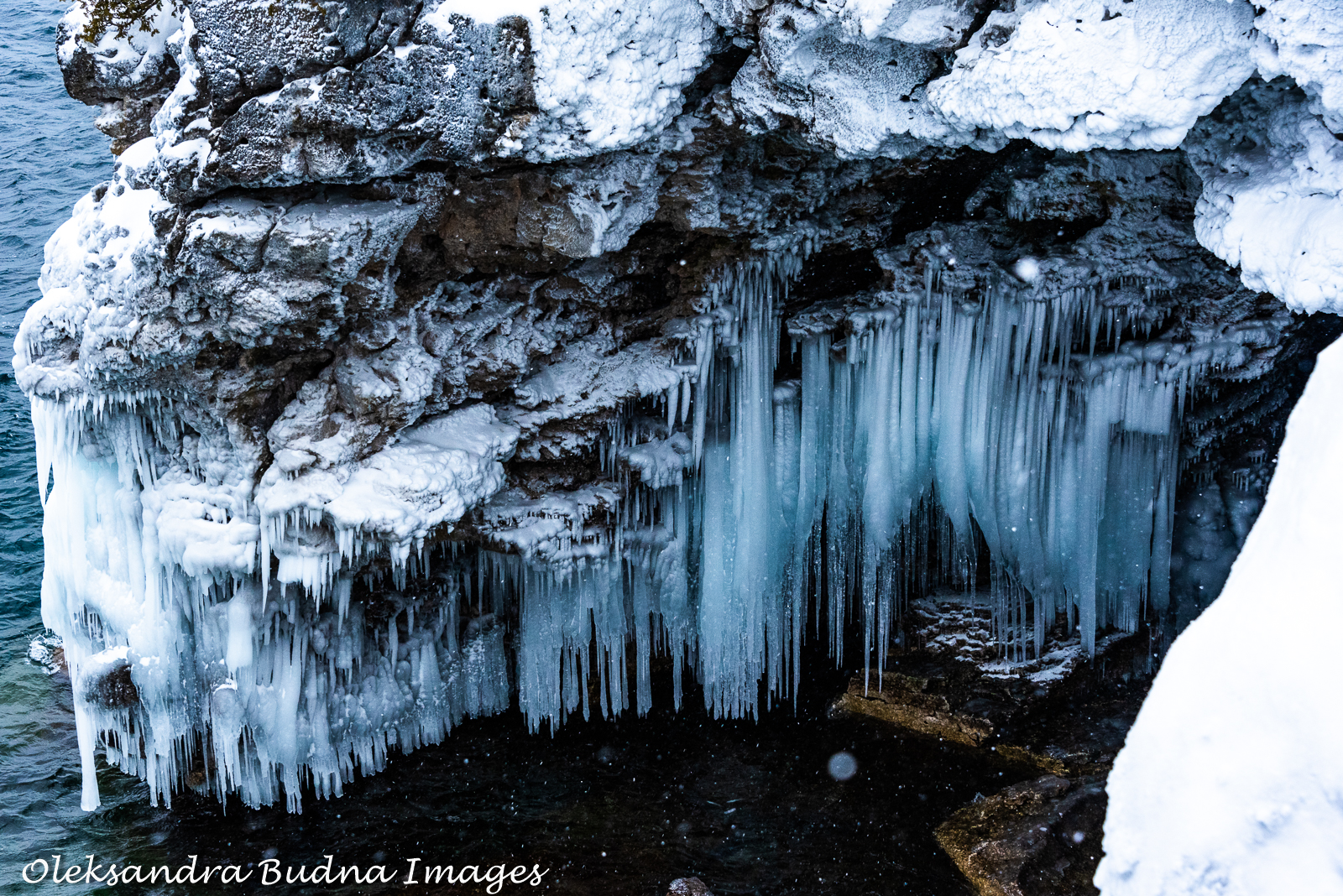

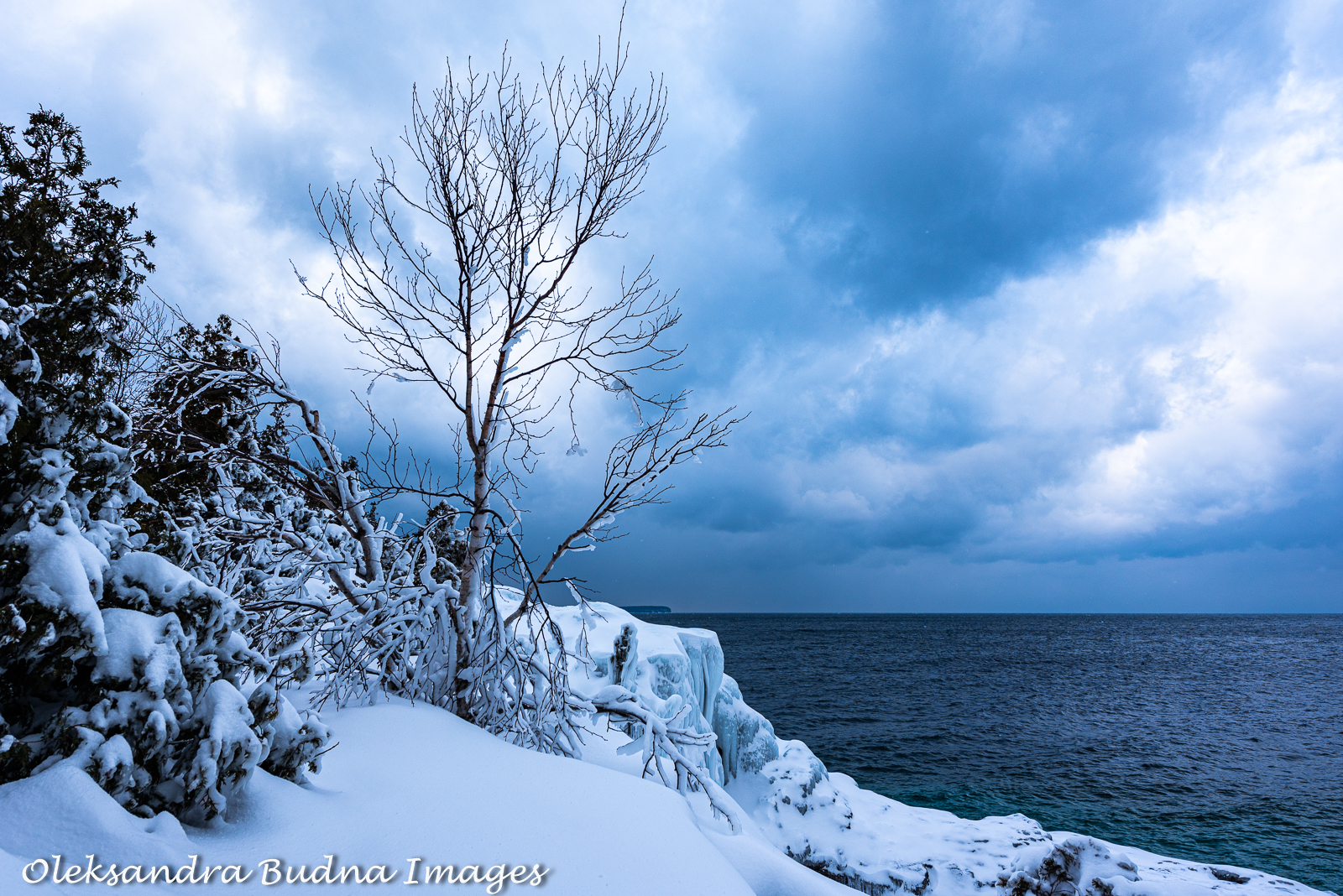
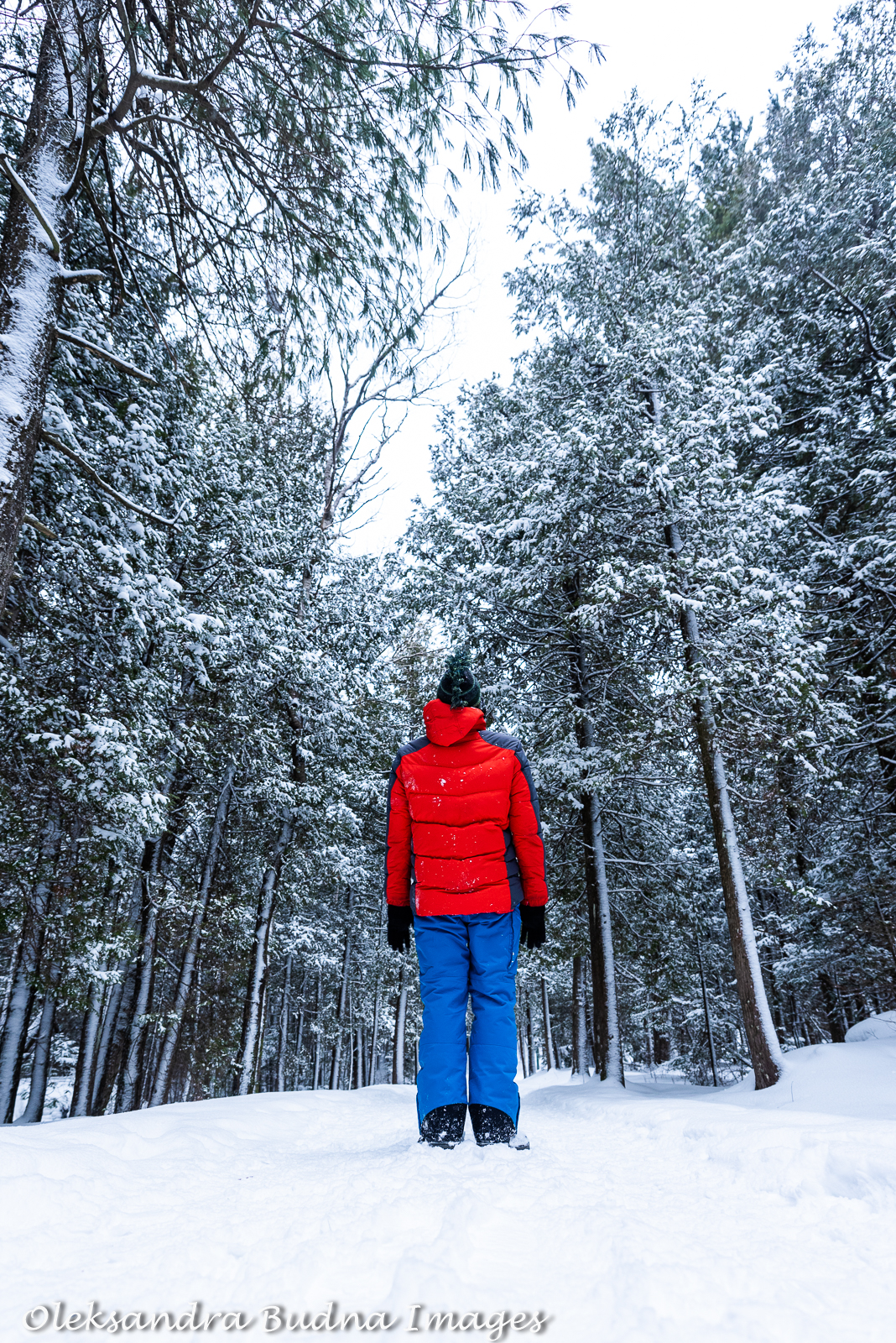




Great snow and ice scenes. Well worth the chilly start.
LikeLiked by 1 person
Definitely!
LikeLiked by 1 person
Oh my gosh, I don’t know where to begin! What a spectacular place in winter!! The ice sculptures, contrast of snow against the cerulean water, the ice chandeliers… I’m swooning! Glad you had this opportunity to try out the yurts there, and thank you for sharing all this!
LikeLiked by 1 person
Bruce Peninsula is a spectacular place any time of the year. But I think winter adds a special magic touch. And, yes, I’m very happy yurts are now open year round so we can stay there during colder months.
LikeLiked by 1 person
enchanting invitation to experience the serene beauty of winter camping. The article captures the allure of yurt camping amid snow-covered landscapes, promising an immersive and cozy adventure in the heart of nature’s winter magic.
LikeLiked by 1 person